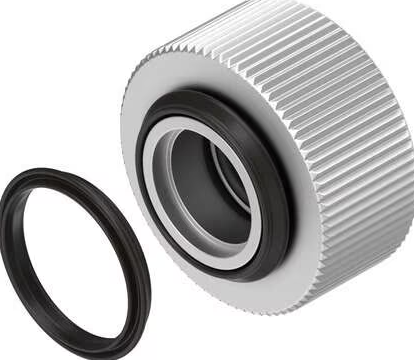In the world of manufacturing and automation, pneumatic systems play a crucial role in powering various machines and processes. Understanding the basic components of a pneumatic system is essential for engineers and technicians who work with these systems to ensure efficiency and reliability.
What is a Pneumatic System?
A pneumatic system uses compressed air to transmit and control energy. This type of system is commonly used in industrial settings because it is clean, safe, and cost-effective. The basic idea is to use air pressure to create mechanical motion. Compressed air is generated by an air compressor, stored in a reservoir, and distributed through a network of components to perform work such as lifting, moving, or gripping objects.
Pneumatic System Components
A pneumatic system comprises several essential components, each with a specific function. Here are the key parts:
- Air Compressor:
- Generates compressed air.
- Available in various types, including reciprocating, rotary screw, and centrifugal.
- Essential for converting power into potential energy stored in pressurized air.
- Air Reservoir:
- Stores compressed air.
- Helps in maintaining consistent pressure.
- Provides a buffer to handle fluctuations in demand.
- Air Dryer:
- Removes moisture from compressed air.
- Prevents corrosion and damage to system components.
- Ensures the longevity and reliability of pneumatic equipment.
- Air Filter:
- Filters out contaminants from the air.
- Ensures clean air for the system.
- Protects sensitive components from dust and debris.
- Pressure Regulator:
- Maintains the desired pressure level.
- Ensures consistent operation of pneumatic components.
- Adjusts the air pressure to match the requirements of different tools and machines.
- Control Valves:
- Direct the flow of air to different parts of the system.
- Includes directional control valves, flow control valves, and pressure control valves.
- Essential for managing the operation and sequence of pneumatic devices.
- Actuators:
- Convert compressed air into mechanical motion.
- Types include cylinders (linear motion) and motors (rotary motion).
- Perform the physical work required in various applications.
- Piping and Hoses:
- Transport compressed air throughout the system.
- Must be durable and leak-free.
- Ensure the efficient and reliable delivery of compressed air to all components.
- Lubricator:
- Adds lubrication to the air stream.
- Extends the life of pneumatic components.
- Reduces friction and wear in moving parts.
When to Use a Pneumatic System?
Pneumatic systems are ideal for various applications in the manufacturing and automation industry. They are especially useful when:
- Cleanliness is Essential:
- Pneumatic systems do not produce contaminants, making them suitable for food and pharmaceutical industries.
- Ensures compliance with strict hygiene standards.
- Safety is a Concern:
- Pneumatic systems are inherently safe as they use air instead of electricity, reducing the risk of sparks and explosions.
- Ideal for hazardous environments where electrical systems may pose a risk.
- Cost-Effectiveness is Important:
- Pneumatic components are generally less expensive and easier to maintain than hydraulic and electric systems.
- Lower initial and ongoing costs make them an economical choice.
Benefits of Pneumatic Systems
There are several advantages to using pneumatic systems in industrial applications:
- Reliability:
- Pneumatic systems are known for their durability and long service life.
- Minimal maintenance requirements contribute to reduced downtime and operational costs.
- Flexibility:
- Easy to control and modify for different applications.
- Adaptable to a wide range of industrial processes and tasks.
- Speed:
- Capable of rapid movement and response times.
- Ideal for high-speed automation tasks where quick actuation is necessary.
- Energy Efficiency:
- Compressed air can be generated on demand, reducing energy waste.
- Potential for energy recovery and reuse, further enhancing efficiency.
- Environmentally Friendly:
- No hazardous fluids are involved, making it an eco-friendly option.
- Reduced environmental impact compared to hydraulic systems that use oil.
Examples in the Manufacturing Space
In the manufacturing sector, pneumatic systems are widely used in various applications:
- Assembly Lines:
- Pneumatic tools and machines automate repetitive tasks, improving efficiency and consistency.
- Examples include pneumatic screwdrivers, drills, and rivet guns.
- Material Handling:
- Pneumatic conveyors and lifters transport materials quickly and safely.
- Common in packaging, automotive, and electronics industries.
- Packaging:
- Pneumatic actuators and controls ensure precise packaging processes.
- Used in operations such as filling, sealing, and labeling.
- Robotics:
- Pneumatic grippers and actuators provide versatile and reliable movement for robotic arms.
- Used in tasks like pick-and-place, welding, and painting.
- Machining:
- Pneumatic clamps and fixtures hold workpieces securely during machining operations.
- Ensure precision and stability in milling, drilling, and cutting processes.
Pneumatic systems are integral to the manufacturing and automation industries, offering a reliable, flexible, and efficient solution for a wide range of applications. By understanding the basic components and benefits of these systems, engineers, and technicians can design and maintain pneumatic systems that enhance productivity and safety in their operations.
If you need pneumatic components feel free to check out Quotebeam. Quotebeam Marketplace streamlines part procurement with its expansive inventory and tailored recommendations, ensuring you easily find in-stock components.








